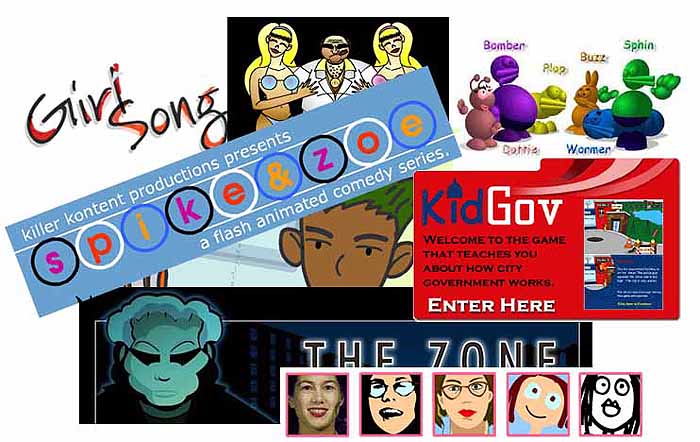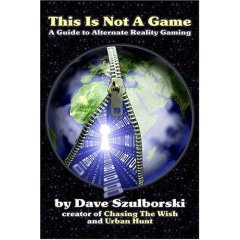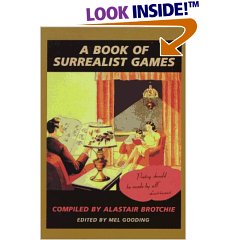
T580: Interactive Storytelling and Game Design OverviewThis course is about human-media interaction: interactive storytelling, computer game design and more. While many of the tools used in this class are technical this is not a technical course. The essence of this course is the most human of all, storytelling. Story is what makes us tick, story reaches inside of us and reveals the world through myth, metaphor, and archetype. If I start to say, "Once upon a time it was late at night and a small child trembled in the corner of a dark room as the door slowly creaked open ..." you already know something bad is about to happen. You are into the story. You are at the beginning and you want to know more about the small child. What did the child do to be in such a predicament. What happens next. How will the story be resolved. What does the story mean. Joseph Campbell, the mythologist, suggested that the cave wall paintings of Altamira and Lascaux were visual story tools the elders used to initiate the young into the adulthood and the meaning of life. Story is probably as old as humankind. Interactive digital storytelling is just the most recent upgrade so to speak. In stories there will be various characters with flaws, there will be obstacles which must be overcome, there will be a beginning, middle, and end. As with all good art nothing will be in the story which doesn't serve the purpose of moving the story along to reveal the mystery and meaning of the story. Unlike traditional storytelling digital stories will be told with graphics, animation, sound and text. Digital stories start with a sketch in either text or images or maybe both, the story board. The story board is enhanced and the story is developed and finished. Computer games are the same as digital stories to this point and then digital stories and computer games diverge because computer games are interaction , non-linear. Paintings are painted to be hung and considered. Books are written to be read. Film, radio and television are produced to be listened and watched. Computer games and much digital multimedia is designed to be read, to be watched, to be listened to, but also to be manipulated in ways the designer/author had anticipated and also had never anticipated. This is the human-media interaction. People don't interact with the hardware or the software, they interact with the representation, with the message of the medium. If you sit in the front row of your neighborhood multiplex and watch Jurassic Park you cringe when the Raptors appear. You are afraid because of the story and the images and the sounds. When you play Doom or Quake you worry as you turn a corner. Will someone or something be waiting there to kill me? Granted it isn't real death but you do attempt to dodge the bullet if possible. This is part of the interaction the playability of the game. This is very difficult to write and design. This is what is new. In the early days of film it was difficult to talk about the media because the word cinematic did not exist. We needed that word. Interaction is what is difficult to understand with computer games but it probably isn't the right word. We still can't talk about this medium we call computer games. We are at the birth of a medium, similar to D.W. Griffith in the early days of cinema and similar to KTLA in the early days of television after World War 2. We are still figuring out how to use and talk about the medium of games. Early versions of multimedia were designed with languages such as Super Pilot and HyperCard which were branching languages which allowed the author to design the system to direct the user this way or that way depending upon what they selected. Originally the links were word choices, later languages such as HyperTalk and HTML allowed for combinations of word/image links and also complete visual and spatial selection. The author was also now able to link completely outside of their immediate writing environment to environments written and maintained by others. Some of the earliest and most extreme examples of this sort of digital interaction were in computer games. Computer games while the most interactive of all digital media are also indicative of another aspect which is closely related to the idea of the game, fun. "... we continue to see, without humor, the prospect of a decade of research analysis of usability possibly failing to provide the leverage it could on designing systems people really want to use by ignoring what could be a very potent determinant of subjective judgement of usability -- fun." Carroll. "FUN" in SIGCHI Bulletin, January 1988, Volume 19, Number 3. pp. 21-23. Carroll pointed out the reason why fun is not researched. First not many researchers want to be known as 'fun' researchers and researching fun runs into the problem of killing the observed, fun. One obvious form of information research which gets around the death of fun is the actual design of interactive, fun computer games: design as research. The field of human-computer interaction has roots in many fields: computer science, education, information studies, human factors, ergonomics, computer graphics, industrial engineering, cognitive psychology, and computer game design. The perspective of this class is that computer game design is the cutting edge which leads the other fields. |
ObjectivesThere are five simple objectives of this course:
By the end of the course the student will have an understanding of game design informed by the practical experience of actually creating a preliminary design specification and using rapid prototype tools to develop a working model. |
Day-to-DayFor the most part, the first 5 weeks of the term will be spent conceptualizing, discussing and critiquing ideas and existing games. The last 10 weeks will be spent developing 4-5 ideas: design document, business model, and working prototype for public demonstration at the IDEAS festival. The primary prototyping software tools will be what ever you think is appropriate. The piece dictates the tool. |
Assessment
All assignments must be turned in on time and completed before the end of the term for a passing grade. 100% of the above assessment is a B grade which means it is good. Excellence is an A grade and a totally subjective judgement on my part of the quality of participation in class; work done in class; work done outside of class; and worked handed in. |
Required books: |
|
 This Is Not a Game: A Guide to Alternate Reality Gaming (2nd Digital Edition) (Paperback) by Dave Szulborski |
 A Book of Surrealist Games (Paperback) by Alastair Brotchie, Mel Gooding |
 Homo Ludens / Man As Player (Historias / History) (Paperback)
by Johan Huizinga Homo Ludens / Man As Player (Historias / History) (Paperback)
by Johan Huizinga |
|
Schedule |
|
|
January 9 |
January 11 |
|
January 16 |
January 18 |
|
January 23
|
January 25
|
|
Jan 30 |
February 1 |
|
February 6 |
February 8 |
|
February 13 |
February 15 Readings: This is not a Game |
|
February 20
Individual Media Proposal: 10 + pages and story boards. |
February 22 |
|
Feb 27 |
March 1 |
|
March 6 |
March 8 |
|
Mar 13 Spring Break |
March 15 |
|
March 20 |
March 22 |
|
March 27 |
March 29 |
|
April 3 |
April 5 |
|
April 10 |
April 12 |
|
April 17 |
April 19 |
|
April 24 Final public presentation of current work in room 250 Friday evening |
April 26 |